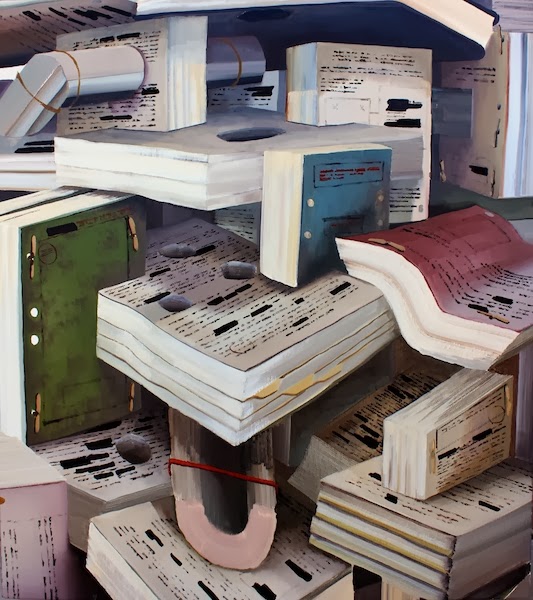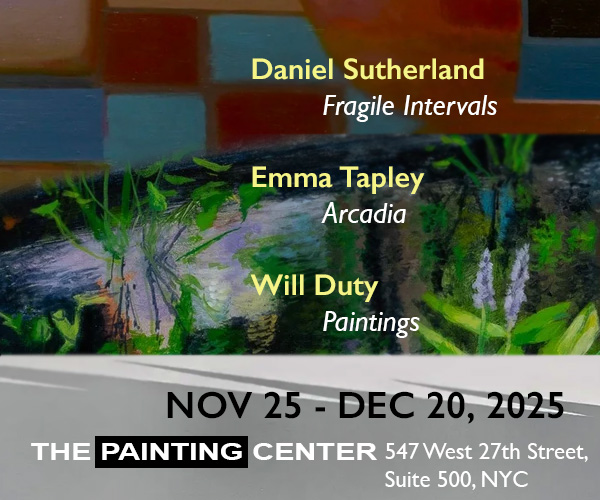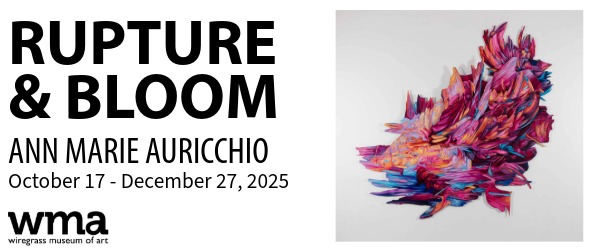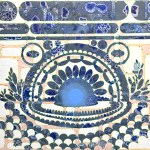Guest contributor Dion Kliner / All history is redacted history (Papers I, image posted above), which is to say that all history is manufactured history (Classified). This is as true of objects as it is for events. Some things survive, others don’t; at least as far as our knowledge of them is concerned. In “Aforementioned,” Etienne Zack‘s recent solo show at Equinox in Vancouver, the artist suggests that what enters the story is sometimes a matter not of quality or value, but merely what has the good fortune to survive. Time is the adversary over which those who write history are victors.
In the realms of art and artifacts, some come to us intact, others do not. The reconstructions that we provide for missing sections (as in the sections of vase of Classified) are equivalent to the redacted portions of documents (as in the blacked out sections of Papers I). They are the blank spaces, realms of and for speculation; so much so, that (as I was once told by a preparator at the American Museum of Natural History) when it comes to reconstructions, science and fiction are in equal balance. Wholeness existed and was known, but is now lost, although hope for recovery remains.
History, no less than art, can be a window that gives a view of what
has come before, and in this sense can be nourishing and generative for
what will follow. Regiments is part giant store room reminiscent
of the final scene of Citizen Kane (or the storage of any museum) and
part warren. Loosely buried in the clutter of crates, tables and
objects stand enormous carrots connected by radiating timbers like the
hubs of spoked wooden wheels, and the spoked space stations of Kubrick’s 2001: A Space Odyssey.
Like nodes on a cladogram the carrots provide some semblance of relationship in what would otherwise be chaos. The transparency of some of the objects, especially the timbers connecting the carrots, gives a sense of motion, as if the process of whatever is happening is happening before our eyes. It may be an expression of the optimism that if we plant in the soil of history we will be nourished by it. Yet the leafy green of the carrots has been cut, so growth has been truncated.
If history can be generative and a window, it can also be a gate or screen, even if beautifully filigreed, and in that sense can stunt growth. Composed of different types of figurative sculptures (Greek-ish, Aftrican-ish, Paleolithic-ish) assembled into such a barricade, Calibration suggests this darker view. History offers no passage to the other side (the future), and what we can see of it through the small gaps between the figures is blank.
At the core of “Aforementioned” is our use and manipulation of history. Circa shows a group of cases containing a collection of specimens and artifacts: dinosaur, mummy, meteor. The glass and casework should give a clear and organized view of what’s within, but they don’t. Instead the view is fractured and confused into magnified and diminished scales that give an approximate view of the contents, but a close reflection of the fact that no matter how well organized our knowledge, it is incomplete and conditional at best in our manufacture of meaning and history.
“Etienne Zack: Aforementioned,” Equinox Gallery, Vancouver, Canada. Through December 21, 2013.
——
Two Coats of Paint is licensed under a Creative Commons Attribution – Noncommercial-No Derivative Works 3.0 United States License. For permission to use content beyond the scope of this license, permission is required.




























